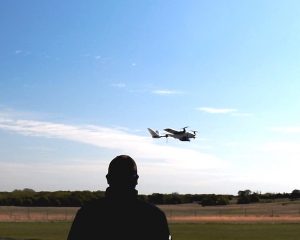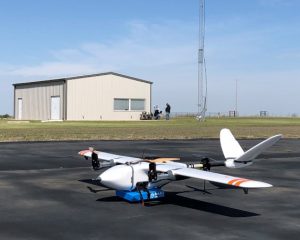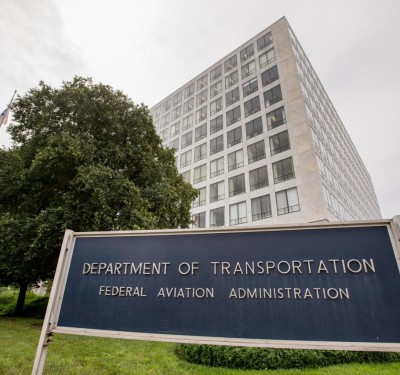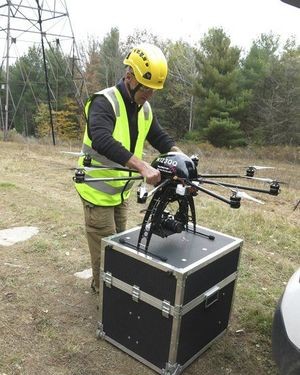
The OSU Nimbus VTOL V2 UAS landing while carrying the MaxQ medical supply payload during the flight test on April 16, 2020.
Oklahoma-based Vigilant Aerospace Systems recently demonstrated how its FlightHorizon detect-and-avoid airspace management system could one day be used to enable drones to make critical deliveries during a pandemic or natural disaster.
During the test, FlightHorizon tracked Oklahoma State University’s (OSU) specially modified medical supply delivery drone as well as surrounding air traffic, which is essential when performing the beyond visual line of sight (BVLOS) flights required for deliveries. The modified Nimbus VTOL V2 drone used in the test is equipped with a MaxQ temperature-controlled delivery payload. The flight was carried out by OSU’s Unmanned Systems Research Institute.
“We specifically teamed up with OSU to perform these flights because we wanted to demonstrate how you can use an aircraft designed like this with a system like ours to fly beyond visual line of sight to safely make deliveries,” Vigilant Aerospace CEO Kraettli Epperson said. “That could be anything from a virus testing kit to receiving a sample and flying to a lab or delivering routine medical supplies to rural locations or locations where people are social distancing.”

The OSU Nimbus VTOL V2 UAS equipped with a MaxQ medical supply payload at the OSU Unmanned Aircraft Systems Flight Station.
FlightHorizon tracked the drone and air traffic in real time throughout the flight. While they’re still analyzing the data, Epperson confirmed the system successfully tracked both cooperative and noncooperative air traffic well beyond the UAS pilot’s visual line of sight.
One of the biggest challenges to using drones for these types of deliveries is the lack of safety criteria for BVLOS flights, which is an obstacle Epperson and his team are trying to help overcome.
“We know systems like this are being used outside the U.S., particularly in Africa and other places with much less complex airspace,” Epperson said. “We know it can be done, the question is how do we design a system that can do it safely in the U.S. so everyone is comfortable with it. We’re hoping to see these types of deliveries happening in the U.S. in the short term, but we also know we have to collect the data. We’re doing flight tests now to advance the safety case and help provide the system needed for the FAA.”
FlightHorizon takes in data from multiple sources to track the drone and surrounding aircraft, Epperson said, including a radar transponder, a receiver and onboard telemetry from the drone’s flight control system. If it identifies a conflict or a loss of correct safety distance between the drone and other aircraft, the pilot on the ground is alerted. The system provides an avoidance command and a series of waypoints to allow the pilot or autopilot to avoid potential conflict. Radar is the newest sensor to be added to the prototype, which is being used in multiple NASA and FAA R&D projects.
The flight was conducted as part of the research and development project funded by the Oklahoma Center for the Advancement of Science and Technology’s (OCAST) Oklahoma Applied Research Support program (OARS). This is the fourth demo Vigilant has completed with OSU and the second testing radar. Epperson said there are plans for more testing in May and June. Vigilant also was recently awarded a contract by the FAA to carry out test flights with multiple radar systems at the Alaska UAS Test Site operated by the University of Alaska Fairbanks. Those tests will begin as soon as travel restrictions are lifted.






